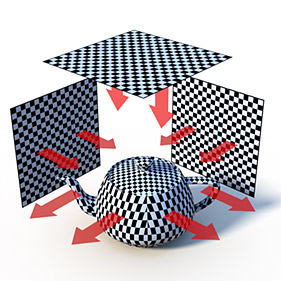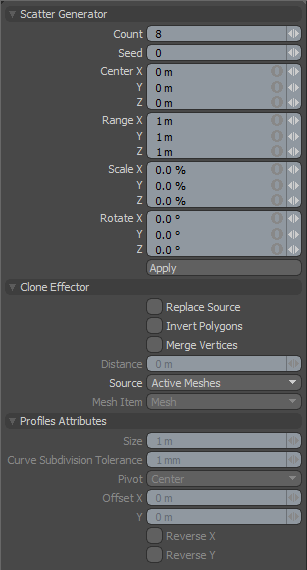
“why develop animation tools if no one animates / no one animated because the tools are not good enough”). Anyway – my guess is that any area you feel “esoteric” is where there wasn't enough emphasis for development over the years (it also can be a cycle, e.g. If I had my own shop, I'd definitely go for a mostly Houdini-based pipeline (except modeling and perhaps animation). the mantra renderer is about as capable as Arnold.
#Modo 801 replicators archive
A few unrelated examples: - you can open a geometry details view of a million-poly object or particle and it pops up instantly, and you won't experience any slowdowns - the native bgeo geometry format is also the geometry archive format for mantra, the renderer (so your saved objects are automatically renderer stand-ins) - the shading language can be used (apart from shaders) to modify (or build) geometry, simulation behaviours, animation channels, etc.

Although Houdini can have a certain “old-school” feel to it, most of the relevant internal parts are quite modern, and it is a robust app (I do VFX, so I mostly have experience specific to that, but I'm pumping through it an insane amount of geometry data on a daily basis).

On the contrary: I wish there were more procedural-approach 3d apps out there (with SI, at least there was two, now with the EOL it will be only Houdini.) Also, probably what you feel like “esoteric” is the SOP/modeling part, which is mostly quite old (see my comment above about the 10+yrs tools). Well, an audience above a certain size can have an unfortunate diluting effect (I'm just stating facts, not promoting elitism, just saying to avoid any misunderstandings ) I'm certainly not talking about Softimage (especially ICE) users. Keeping it in this esoteric state does not bode well with popularity, which, whether we like it or not, does have a lot to say in this economy as far as a product's survival goes. It doesn't have to sacrifice any of the current paradigms which made Houdini the powerhouse for TDs that it is, just add and improve in certain areas.

The indirect radiative forcing due to particle changes in natural cirrus clouds may be of the same magnitude as the direct one due to additional cover.McNistor In these times a product has to appeal to a larger audience for a more secure future. The net effect depends strongly on the daily variation of contrail cloud cover. Contrails cool the surface during the day and heat the surface during the night, and hence reduce the daily temperature amplitude. At the top of the atmosphere, a mean contrail cover of 0.1% with average optical depth of 0.2 to 0.5 causes about 0.01 to 0.03 Wm−2 daily mean instantaneous radiative forcing. The forcing increases with the optical depth and the amount of contrail cover. At the surface the radiative forcing is negative during daytime.

Optically thin contrails cause a positive net forcing at top of the atmosphere. The model atmospheres include tropical, mid-latitude, and subarctic summer and winter atmospheres. The ice water content is varied as a function of ambient temperature. Contrails are treated as geometrically and optically thin plane parallel homogeneous cirrus layers in a static atmosphere.
#Modo 801 replicators series
Tsushima, Y.Ī parametric study of the instantaneous radiative impact of contrails is presented using three different radiative transfer models for a series of model atmospheres and cloud parameters. Radiative forcing by contrails Radiative forcing by contrails


 0 kommentar(er)
0 kommentar(er)
